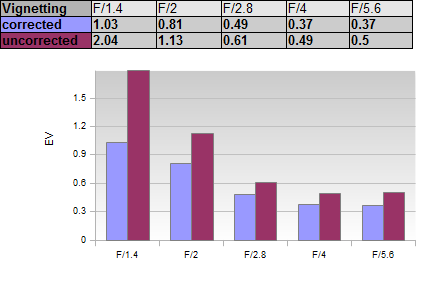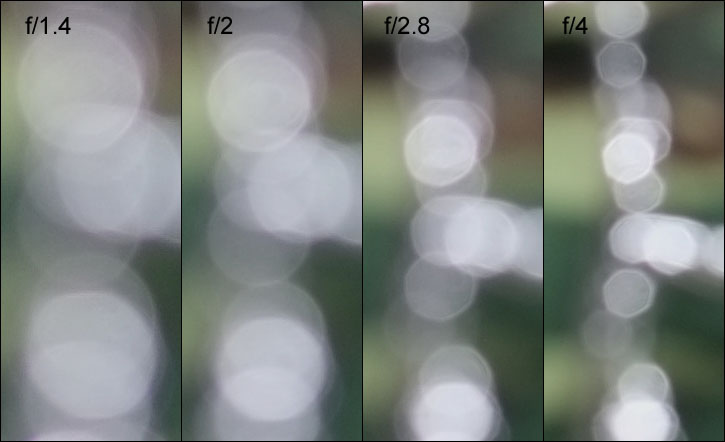|
Fujinon XF 23mm f/1.4 R (Fujifilm) - Review / Test Report - Analysis |
|
Lens Reviews -
Fujifilm X
|
|
Page 2 of 3

Distortion
The produced distortion of the Fujinon is marginal at just under 0.2%. This applies both to auto-corrected images as well as uncorrected RAW files. Honestly, this feels almost too good to be true so we are a bit wondering whether Fujifilm corrected the RAWs in the camera already. However, with no proof to offer, we remain impressed here.
Vignetting
The light falloff is a different story. In RAW mode the vignetting is heavy with a peak of ~2V (f-stops) at f/1.4. The situation is already much improved at f/2 and stopping down to f/4 reduces the issue down to ~0.5EV which isn't really relevant anymore. In JPEG mode, the camera digitally corrects the vignetting down to 1EV at max. aperture and less than 0.5EV from f/2.8 onward.
Please note that vignetting compensation is lossy - it comes at cost of higher sensor noise in the image corners due to the required "light amplification".

MTF (resolution)
Regarding the typical impacts of an ultra-large aperture, the Fujinon XF 23mm f/1.4 R provides very decent results in terms of resolution. At f/1.4 it is capable of delivering a very good center performance combined with good albeit not stellar borders/corners. Stopping down improves the quality slowly but steadily till reaching a peak quality between f/4 and f/5.6. The center quality is excellent followed by very good to excellent borders/corners. Diffraction effects have a higher impact from f/8 onward and unless needed you should avoid smaller apertures.
The centering quality of tested sample was fairly good. The field curvature is quite low.
Please note that the results were obtained from uncorrected RAWs. The quality of the (distortion-)corrected images depends on the specific converter so we decided to avoid this discussion here.
Please note that the MTF results are not directly comparable across the different systems!
Below is a simplified summary of the formal findings. The chart shows line widths
per picture height (LW/PH) which can be taken as a measure for sharpness.
If you want to know more about the MTF50 figures you may check out the corresponding
Imatest Explanations

Chromatic Aberrations (CAs)
The lateral CAs (color shadows at hard contrast transitions) are already quite low with an average pixel width of 0.8px at the image borders at f/1.4. The issue is reduced down to around 0.5px at and beyond f/2.8 - this is pretty much negligible.

Bokeh
A very important aspect of an ultra-large aperture lens is the quality of the bokeh (rendering of the out-of-focus blur) and the Fujinon doesn't disappoint us here.
The background blur is already quite smooth although the foreground is even more buttery. Upon closer observation you may spot greenish halos in the left sample crop below. These are the result of bokeh fringing which is a common effect when shooting at ultra-fast aperture settings.
 Out-of-focus highlights are quite evenly rendered with only a slight outlining effect at f/1.4 and f/2. The highlight discs are circular in the image center but the shape deteriorates a bit towards the image corners. The latter is a rather normal vignetting effect that can be reduced by stopping down. A more edgy aperture shape is visible from f/2.8 onward.
Out-of-focus highlights are quite evenly rendered with only a slight outlining effect at f/1.4 and f/2. The highlight discs are circular in the image center but the shape deteriorates a bit towards the image corners. The latter is a rather normal vignetting effect that can be reduced by stopping down. A more edgy aperture shape is visible from f/2.8 onward.

|